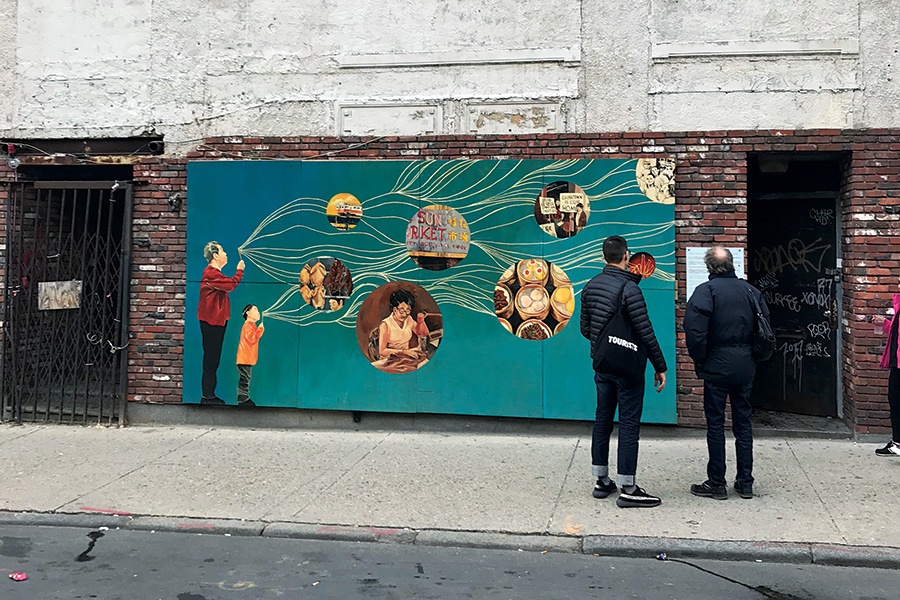Chinatown History Directory
By: Laurel Schlegel
 Boston’s Chinatown has a powerful and complex history, both as a residential neighborhood and home to cultural and activist organizations. Resting on man-made land created by landfill in the 19th century, Chinatown has long been a hub for immigrants. By the turn of the twentieth century, Chinatown was the cultural, social, political, and institutional heart of New England’s Asian American communities with flourishing local businesses, community programs, and places of worship. Similar to many majority-immigrant communities in Boston and throughout the country, Chinatown was targeted for large-scale urban renewal projects in the 1950s and 1960s.
Boston’s Chinatown has a powerful and complex history, both as a residential neighborhood and home to cultural and activist organizations. Resting on man-made land created by landfill in the 19th century, Chinatown has long been a hub for immigrants. By the turn of the twentieth century, Chinatown was the cultural, social, political, and institutional heart of New England’s Asian American communities with flourishing local businesses, community programs, and places of worship. Similar to many majority-immigrant communities in Boston and throughout the country, Chinatown was targeted for large-scale urban renewal projects in the 1950s and 1960s.
During this time, the Boston Redevelopment Authority (BRA, the predecessor to today’s Boston Planning and Development Agency, or BPDA) seized land through eminent domain and displaced thousands of people across Boston. Chinatown residents fought to defend and maintain their community through grassroots organizing and coalition building, surviving in the face of hostility and urban renewal. Although urban renewal has come to an end, the fight to protect Chinatown continues today as residents and organizations are fighting to maintain their community in the face of gentrification.
During the Spring of 2021, the Boston Research Center met with community partners in Chinatown, including Boston Chinatown Neighborhood Center, Pao Arts Center, Chinese Historical Society of New England, Chinatown Community Land Trust, Chinatown Branch of the Boston Public Library, Friends of the Chinatown Library, Dr. Michael Liu, and Dr. Heang Leung Rubin. Through these conversations, we heard about the photographs, newsletters, recorded interviews, maps, and other materials that tell the story of Chinatown’s past. However, these records are spread across area libraries, archives, museums, and personal collections in Greater Boston. We also heard that with records in so many places, it can be difficult for researchers to know where and how to learn more about the history of Chinatown. Concerned about the accessibility of the neighborhood’s historical materials, community partners advised that community members looking to learn more about their neighborhood history would benefit from a bilingual database linking to relevant collections and organizing collections across the neighborhood.
To help identify historical records and community history projects, the Boston Research Center worked with these community advisors to develop a survey in simplified and traditional Chinese script as well as English. Using the information gathered in the survey, the Boston Research Center created the Chinatown History Directory. We established data models for representing collections, organizations, and people in a structured way that allows for a searchable and browsable directory of collections. A launching point for neighborhood research, the bilingual website aims to support Chinatown community members seeking to learn more about their neighborhood history as well as engage a wider audience to enrich the understanding of Chinatown’s history.
In the next phase of the project, the Boston Research Center plans to migrate the data from the inventory into a CERES-supported site, which will include browsing capabilities and a more sophisticated design. The archival collections revealed through the Chinatown History Directory could then be used to contribute information to ongoing community projects, such as an interactive map about Chinatown’s immigration history. Such an inventory could also help identify items in need of preservation support and establish partnerships for future collaborative efforts and digitization projects.
If you know of historical collections or projects that we’re missing, or if you have ideas about the language or navigability, we welcome constructive feedback about the Chinatown History Directory. Reach out at brc@northeastern.edu to share your thoughts.
